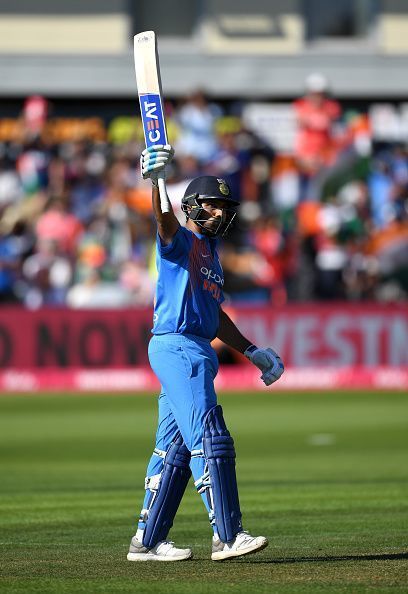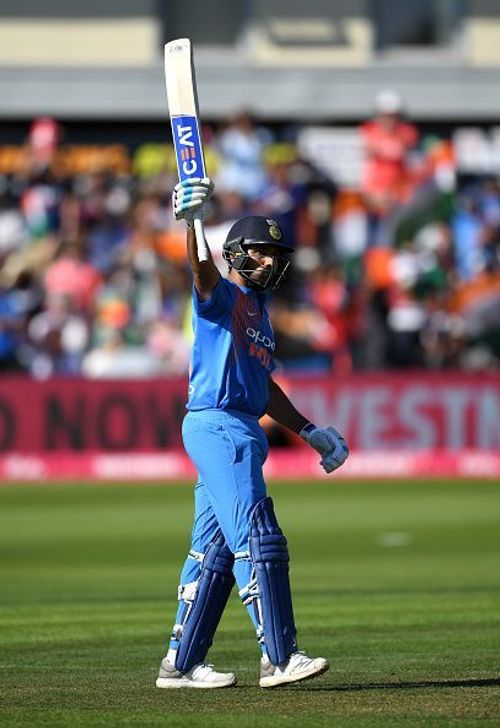
Why has Rohit Sharma not been able to replicate his limited-overs form into Test cricket?

Indian batsman Rohit Sharma made his international debut during the World T20 2007 in South Africa. He smashed an unbeaten half-century in just his second T20I match to help his team claim a fighting victory against South Africa and qualify for the semi-finals of the tournament. He made his ODI debut against Ireland in 2007 and started playing in the middle-order position.
After earning some success in the initial part of his ODI career, Rohit was several times dropped from the national side. However, the real turning point in the Indian batsman’s career came in, when he was given the chance to open the innings during the ICC Champions Trophy 2013 in England by the Indian captain MS Dhoni. Since then, Rohit has excelled massively and has also made numerous improvements in his techniques, which is required for an opener to succeed in different types of conditions.
The 31-year old has so far played 183 ODIs and 84 T20Is for India, in which he has scored 6748 and 2086 runs respectively both at an impressive average. He has amassed 18 hundred in the 50-overs format and is the only cricketer on the planet to score three double centuries in ODI cricket. The right-hander also has 3 T20I hundreds to his name and one of them being the joint-fastest century which came off just 35 balls against Sri Lanka in 2017.
Rohit after making a mark in the limited-overs format has failed to replicate his impressive form in Test cricket. He made his Test debut in 2013 during a home series against the Windies and scored a scintillating ton on debut at the Eden Gardens in Kolkata. He followed it with another century in his second match during his innings of 111 runs at the Wankhede Stadium and also became the only third Indian cricketer to score back-to-back centuries in the first two Tests. However, after an exciting start to his Test career, he failed to score runs in the overseas conditions, thus he was dropped several times from the Indian Test team. He was also recently recalled into the Test side due to his striking performance in the home series against Sri Lanka, but once again he flunked convincingly to show some grit and application in the away series in South Africa, earlier this year.
Here are the three potent reasons on why Rohit has not been able to replicate his limited-overs form into Test match cricket:
1. Struggles against the moving ball
As seen in the recent games against the Proteas and the majority of his Test career, Rohit has found it really hard to score runs against the moving ball in both swinging and seaming conditions. In the modern day limited-overs cricket, most of the batsmen around the world including Rohit have got very much used to playing with the white ball which does not swing much. The lack of swing allows the batsmen to hit through the line shots and score runs heavily and make a merry of the bowlers. Rohit has had his share of struggles in the seaming conditions against quality bowlers, who continuously look to target his weaker areas, which is a major reason for his failure to make a similar mark in the longest format of the game.
2. The irregularity due to injuries
Constant injuries at very crucial times have also been a reason for Rohit’s downfall in red-ball cricket. The Indian opener was about to make his Test debut first in February 2010 to replace VVS Laxman, but he conceded an anti-climatic injury while playing football in the warm-up session before the match. The dramatic injury forced him to delay his Test debut, which he later made in 2013. It is an optimistic view but had Rohit made his debut earlier, he could have been able to become a much consistent and different Test batsman.
3. Batting Position in Test matches
Rohit has been tried at several positions in the longest format, but so far he has found some comfort only at the No 6 position, where he has scored his three Test centuries. It is also a valid point that the Indian team mostly tend to play six specialist batsmen in challenging overseas conditions, which has been the time Rohit is included in the playing XI. Since making his debut in 2013, he has played 25 Tests in which he has scored 2682 runs at an average of 39.97 and has been in and out of the Test side due to selections in accordance with the conditions. In a recent interview, Rohit mentioned that he is ready to open the innings in Test matches, if the team wants him to, much like the limited-overs format.
However, it is a difficult thing to digest for all of Rohit’s fans and the spectators that a batsman like him who has made a majestic stature for himself in limited-overs, has failed to make a similar impact in Test cricket. The other strange thing is that he has three-double centuries to his name in the 50-overs format and has not been able to play big innings in the longest format of the game